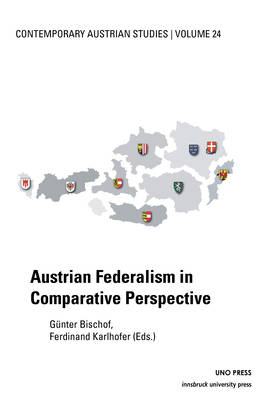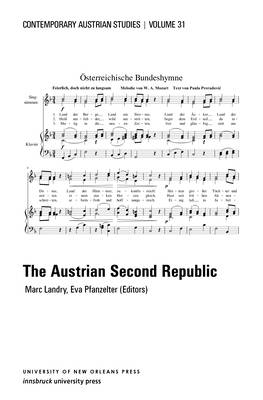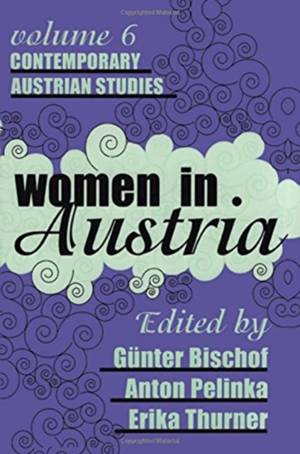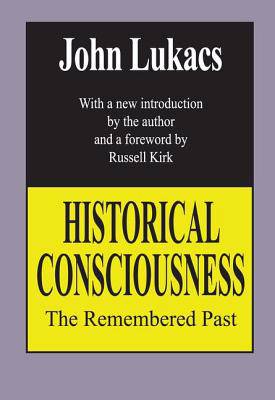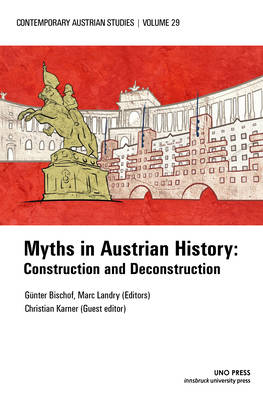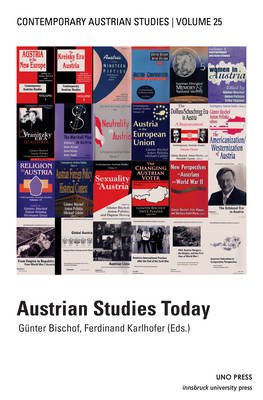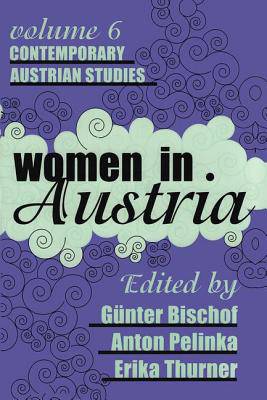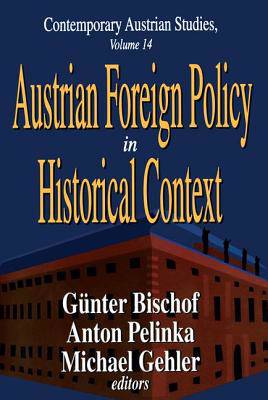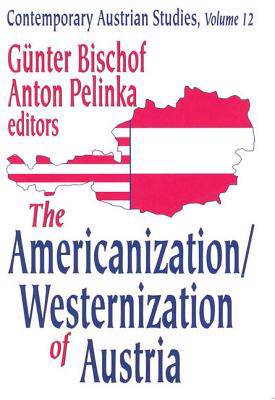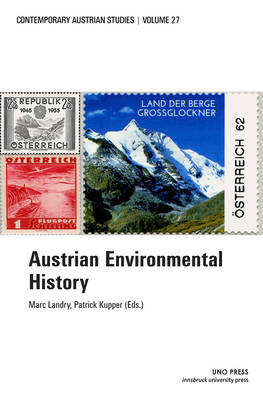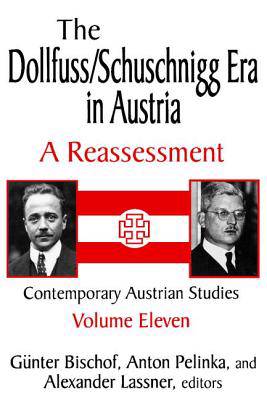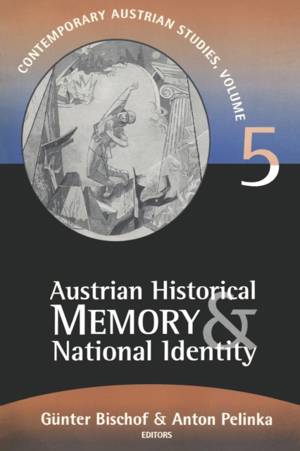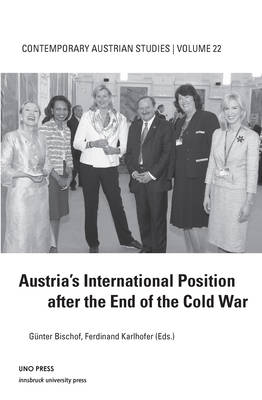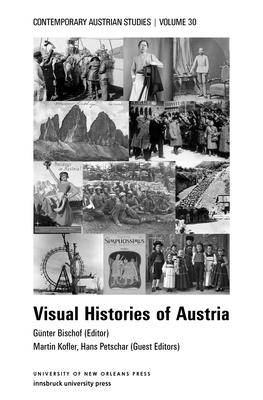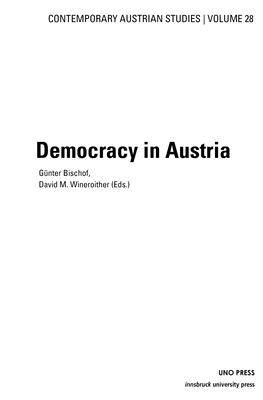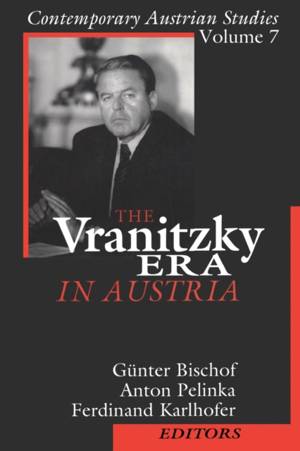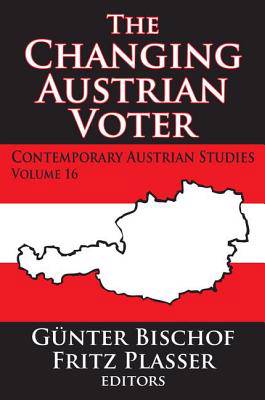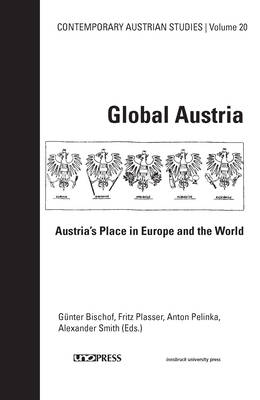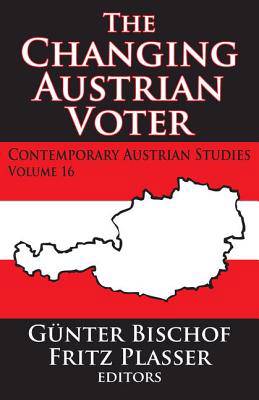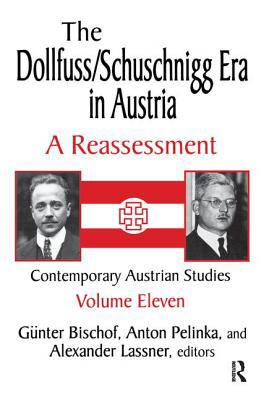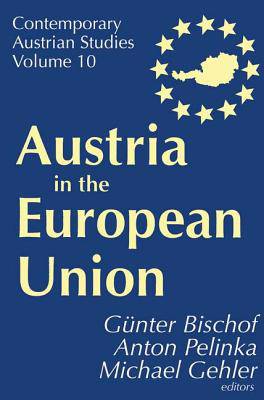
- Afhalen na 1 uur in een winkel met voorraad
- Gratis thuislevering in België vanaf € 30
- Ruim aanbod met 7 miljoen producten
- Afhalen na 1 uur in een winkel met voorraad
- Gratis thuislevering in België vanaf € 30
- Ruim aanbod met 7 miljoen producten
Zoeken
Reeksen: boeken uit de reeks Contemporary Austrian Studies
-
Austrian Federalism in Comp (Contemporary Austrian Studies, Vol 24)
- Paperback | Engels | Contemporary Austrian Studies
- With its ambiguous mix of weak federalist and strong centralist elements, the Austrian constitutional architecture has been subject to conflicting int... Lees meer
€ 55,95Levering 1 à 4 weken€ 55,95Levering 1 à 4 weken -
Austrian Historical Memory and National Identity
Gunter Bischof
- Hardcover | Engels | Contemporary Austrian Studies
- When the Hapsburg monarchy disintegrated after World War I, Austria was not considered to be a viable entity Lees meer
€ 290,45Levering 2 à 3 weken€ 290,45Levering 2 à 3 weken -
New Perspectives on Austrians and World War II
- Paperback | Engels | Contemporary Austrian Studies
- For more than a generation after World War II, offi cial government doctrine and many Austrians insisted they had been victims of Nazi aggression in 1... Lees meer
€ 94,95Levering 2 à 3 weken€ 94,95Levering 2 à 3 weken -
The Austrian Second Republic (Contemporary Austrian Studies, Vol 31)
- Paperback | Engels | Contemporary Austrian Studies
- Contemporary Austria remains greatly influenced by post-1945 efforts to re-establish an Austrian state and forge a new "Austrian" identity. This volum... Lees meer
€ 67,95Levering 1 à 4 weken€ 67,95Levering 1 à 4 weken -
1914 Austria Hungary the Origins (Contemporary Austrian Studies, Vol 23)
- Paperback | Engels | Contemporary Austrian Studies | nr. 23
- For the past 100 years some of the greatest historians and political scientists of the twentieth century have picked apart, analyzed and reinterpreted... Lees meer
€ 55,95Levering 1 à 4 weken€ 55,95Levering 1 à 4 weken -
Women in Austria
Gunter Bischof
- Hardcover | Engels | Contemporary Austrian Studies
- The position of women in Austrian society, politics, and in the economy follows the familiar trajectory of Western societies Lees meer
€ 183,45Levering 2 à 3 weken€ 183,45Levering 2 à 3 weken -
Historical Consciousness
John Lukacs
- Paperback | Engels | Contemporary Austrian Studies
- One of the most important developments of Western civilization has been the growth of historical consciousness Lees meer
€ 99,45Levering 2 à 3 weken€ 99,45Levering 2 à 3 weken -
Myths in Austrian History (Contemporary Austrian Studies, Vol. 29)
- Paperback | Engels | Contemporary Austrian Studies
- Austria's post-WWII 'victim-myth' both shaped the country post-war history and, since its deconstruction in the aftermath of the Waldheim affair, is n... Lees meer
€ 55,95Levering 1 à 4 weken€ 55,95Levering 1 à 4 weken -
Austrian Studies Today (Contemporary Austrian Studies, Vol 25)
Rupnow Dirk, Gunter Bischof, Ferdinand Karlhofer
- Paperback | Engels | Contemporary Austrian Studies | nr. 25
- This volume celebrates the study of Austria in the twentieth century by historians, political scientists and social scientists produced in the previou... Lees meer
€ 55,95Levering 1 à 4 weken€ 55,95Levering 1 à 4 weken -
Women in Austria
Gunter Bischof
- Paperback | Engels | Contemporary Austrian Studies | nr. 6
- The position of women in Austrian society, politics, and in the economy follows the familiar trajectory of Western societies Lees meer
€ 70,45Levering 2 à 3 weken€ 70,45Levering 2 à 3 weken -
Austrian Foreign Policy in Historical Context
Anton Pelinka, Gunter Bischof, Michael Gehler
- Paperback | Engels | Contemporary Austrian Studies | nr. 14
- In 2005, Austria celebrated the sixtieth anniversary of its liberation from the Nazi regime and the fiftieth anniversary of the State Treaty that ende... Lees meer
€ 70,45Levering 2 à 3 weken€ 70,45Levering 2 à 3 weken -
The Americanization/Westernization of Austria
Anton Pelinka
- Paperback | Engels | Contemporary Austrian Studies | nr. 12
- Political, economic, social, and cultural modernization dramatically transformed twentieth-century Austria. Innovative new methods of production and m... Lees meer
€ 102,45Levering 2 à 3 weken€ 102,45Levering 2 à 3 weken -
Austrian Environmental History (Contemporary Austrian Studies, Vol 27)
Marc Landry, Patrick Kupper
- Paperback | Engels | Contemporary Austrian Studies
- This volume on the environmental history of contemporary Austria offers an overview of the field, as well as several topical case studies. In addition... Lees meer
€ 55,95Levering 1 à 4 weken€ 55,95Levering 1 à 4 weken -
The Dollfuss/Schuschnigg Era in Austria
Anton Pelinka
- Paperback | Engels | Contemporary Austrian Studies | nr. 11
- The years of Chancellors Dollfuss and Schuschnigg's authoritarian governments (1933/34-1938) have been denounced as "Austrofascism" from the left, or ... Lees meer
€ 105,45Levering 2 à 3 weken€ 105,45Levering 2 à 3 weken -
Austrian Historical Memory and National Identity
Gunter Bischof
- Paperback | Engels | Contemporary Austrian Studies | nr. 5
- When the Hapsburg monarchy disintegrated after World War I, Austria was not considered to be a viable entity Lees meer
€ 97,95Levering 2 à 3 weken€ 97,95Levering 2 à 3 weken -
Austrias Intl Pos After End Cold War (Contemporary Austrian Studies, Vol 22)
- Paperback | Engels | Contemporary Austrian Studies
- This inventive collection explores Austria's international position after the end of the Cold War. Austria joined the European Union in 1995 and align... Lees meer
€ 64,45Levering 1 à 4 weken€ 64,45Levering 1 à 4 weken -
Visual Histories of Austria (Contemporary Austrian Studies, Vol. 30)
- Paperback | Engels | Contemporary Austrian Studies
- Visual histories in 19th and 20th century Austria are documented here, from court photography and nature photography to political photography. A singl... Lees meer
€ 67,95Levering 1 à 4 weken€ 67,95Levering 1 à 4 weken -
Democracy in Austria
- Paperback | Engels | Contemporary Austrian Studies
- The essays in this volume are dedicated to the ups and downs of 100 years of Austrian democracy. On the occasion of the founding of the First Austrian... Lees meer
€ 55,95Levering 1 à 4 weken€ 55,95Levering 1 à 4 weken -
The Vranitzky Era in Austria
Anton Pelinka
- Paperback | Engels | Contemporary Austrian Studies | nr. 7
- Franz Vranitzky, the banker turned politician, was chancellor during the ten years (1986-96) when the world dramatically changed in the aftermath of t... Lees meer
€ 94,95Levering 2 à 3 weken€ 94,95Levering 2 à 3 weken -
The Changing Austrian Voter
Cesare Pavese, Fritz Plasser
- Hardcover | Engels | Contemporary Austrian Studies
- Compared to the late 1970s, when the Austrian voting behavior was characterized by extraordinary stability, low electoral volatility, and high turnout... Lees meer
€ 183,45Levering 2 à 3 weken€ 183,45Levering 2 à 3 weken -
Global Austria (Contemporary Austrian Studies, Vol 20)
- Paperback | Engels | Contemporary Austrian Studies
- As the Habsburg Empire's successor state with the most visible links to this empire, the small republic is measured by the grand and not so grand acco... Lees meer
€ 55,95Levering 1 à 4 weken€ 55,95Levering 1 à 4 weken -
The Changing Austrian Voter
Cesare Pavese, Fritz Plasser
- Paperback | Engels | Contemporary Austrian Studies
- Compared to the late 1970s, when the Austrian voting behavior was characterized by extraordinary stability, low electoral volatility, and high turnout... Lees meer
€ 70,45Levering 2 à 3 weken€ 70,45Levering 2 à 3 weken -
The Dollfuss/Schuschnigg Era in Austria
- Hardcover | Engels | Contemporary Austrian Studies
- The years of Chancellors Dollfuss and Schuschnigg's authoritarian governments (1933/34-1938) have been denounced as "Austrofascism" from the left, or ... Lees meer
€ 320,95Levering 2 à 3 weken€ 320,95Levering 2 à 3 weken -
Austria in the European Union
- Paperback | Engels | Contemporary Austrian Studies | nr. 10
- Austria joined the European Union in 1995, with the overwhelming support of its citizenry Lees meer
€ 70,45Levering 2 à 3 weken€ 70,45Levering 2 à 3 weken





